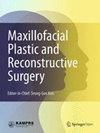牙槽骨移植和牙嵴保存的进展:材料、技术和临床效果综述
IF 2.8
Q2 DENTISTRY, ORAL SURGERY & MEDICINE
Maxillofacial Plastic and Reconstructive Surgery
Pub Date : 2024-04-16
DOI:10.1186/s40902-024-00425-w
引用次数: 0
摘要
这篇叙述性综述系统地探讨了牙槽嵴保存(ARP)材料和技术的发展。我们首先描述了从传统 ARP 方法到尖端替代方法的演变过程,包括富血小板纤维蛋白、可注射骨修复材料和水凝胶系统。对各种研究的严格审查表明,这些创新方法不仅能加速骨愈合,还能显著改善患者报告的结果,如满意度、疼痛感和整体生活质量。重点强调了先进的 ARP 技术与提高患者舒适度和临床疗效之间的相关性,突出了其在牙科种植方面的变革潜力。为了突出 ARP 的有效性,种植体在 5 到 7 年间的存活率很高,显示了这些方法的可靠性和成功性。此外,患者对软组织效果的美学满意度也很高,平均视觉模拟量表(VAS)得分为 94 分。这种积极的美学评价与种植体的临床健康状况有关,可能是由于采用了牙齿支持的手术导板。经济分析表明,骨移植替代物(46.2 美元至 140 美元)和牙槽窝密封材料(12 美元至 189 美元)的成本范围各不相同,值得注意的是,隔离膜的投资与水平和垂直牙脊吸收的减少之间存在相关性。这表明,使用隔离膜对保持牙槽嵴的尺寸有很大帮助,为提高 ARP 的效果提供了一种经济有效的策略。总之,本综述揭示了 ARP 的重大进展,强调了向创新材料和技术的转变,这些材料和技术不仅能提高骨再生能力、缩短愈合时间,还能提高患者满意度和美学效果。有据可查的高种植体存活率和膜使用的经济效益进一步验证了当代 ARP 策略的有效性,为其在牙科种植中的广泛应用铺平了道路。本文章由计算机程序翻译,如有差异,请以英文原文为准。
Advancements in alveolar bone grafting and ridge preservation: a narrative review on materials, techniques, and clinical outcomes
This narrative review systematically explores the progression of materials and techniques in alveolar ridge preservation (ARP). We commence by delineating the evolution from traditional ARP methods to cutting-edge alternatives, including platelet-rich fibrin, injectable bone repair materials, and hydrogel systems. Critical examination of various studies reveals these innovative approaches not only accelerate bone healing but also significantly improve patient-reported outcomes, such as satisfaction, pain perception, and overall quality of life. Emphasis is placed on the correlation between advanced ARP techniques and enhanced patient comfort and clinical efficacy, underscoring their transformative potential in dental implantology. Highlighting the effectiveness of ARP, the implant survival rate over a span of 5 to 7 years was high, showcasing the reliability and success of these methods. Further, patients expressed high aesthetic satisfaction with the soft tissue outcome, evidenced by an average visual analog scale (VAS) score of 94. This positive aesthetic appraisal is linked to the clinical health of implants, potentially due to the employment of tooth-supported surgical guides. The economic analysis reveals a varied cost range for bone graft substitutes ($46.2 to $140) and socket sealing materials ($12 to $189), with a noteworthy correlation between the investment in barrier membranes and the diminished horizontal and vertical ridge resorption. This suggests that membrane usage significantly contributes to preserving ridge dimensions, offering a cost-effective strategy for enhancing ARP outcomes. In conclusion, this review illuminates the significant advancements in ARP, highlighting the shift towards innovative materials and techniques that not only promise enhanced bone regeneration and reduced healing times but also improve patient satisfaction and aesthetic outcomes. The documented high implant survival rate and the beneficial economic implications of membrane use further validate the effectiveness of contemporary ARP strategies, paving the way for their broader adoption in dental implantology.
求助全文
通过发布文献求助,成功后即可免费获取论文全文。
去求助
来源期刊

Maxillofacial Plastic and Reconstructive Surgery
DENTISTRY, ORAL SURGERY & MEDICINE-
CiteScore
4.30
自引率
13.00%
发文量
37
审稿时长
13 weeks
 求助内容:
求助内容: 应助结果提醒方式:
应助结果提醒方式:


